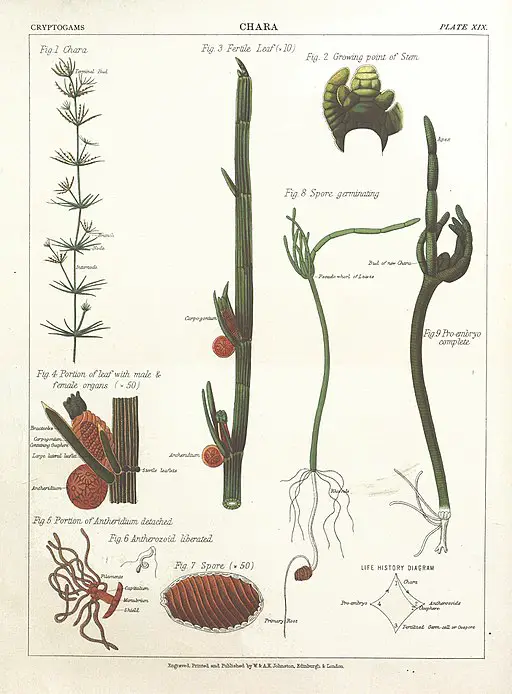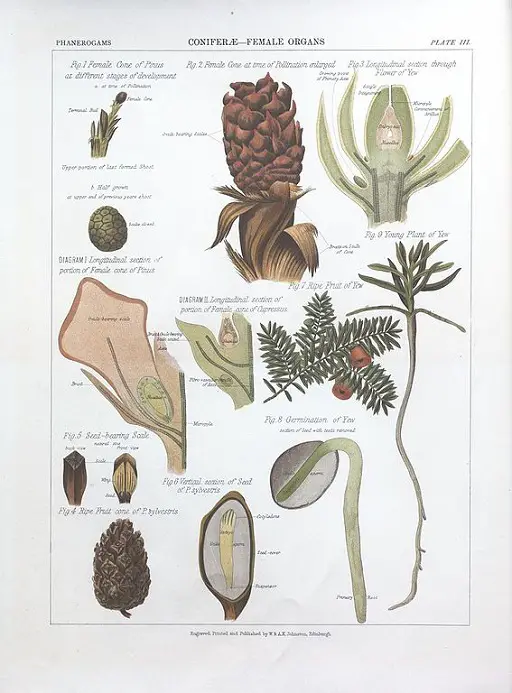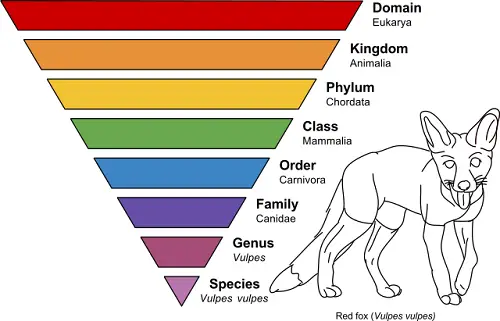In 1883, a well-known German botanist, A.W. Eichler proposed a new system of classification to prove the concept of evolution for the plant kingdom – the Eichler system. It was the first phylogenetic system of the plant taxonomy that revolutionized the classification system of the plant kingdom. He gained a worldwide recognition for his classification system which turned out to be one of the few among the widely accepted natural classification systems of the plant kingdom. Based on the Eichler system of classification, the kingdom Plantae is divided into two sub-kingdoms – Cryptogam (Cryptogamae) and Phanerogam (Phanerogamae). He also became the first taxonomist to divide the Phanerogams into Angiosperms and Gymnosperms, and Cryptogams into Monocots and Dicots.

What is Cryptogams?
Cryptogamae, or commonly referred to as Cryptogams, is a sub-division of the Eichler classification system of the kingdom Planate that bear no flowers, seeds or fruits. It refers to a hidden reproduction system synonymous with the fact that the plant bears no seeds or flowers. These are basically less evolved plants of the plant kingdom that reproduce by spores and they possess a not-so-well developed vascular system. Most of the plant bodies do not have distinct leaves, stems, or roots. It was once distinguished as a distinct group of the kingdom Plantae, but further distinguished as a more evolved form of the plant kingdom.
Cryptogams include plants with concealed reproductive organs. The best known groups of the Cryptogamae include lichens, algae, ferns, and mosses. These non-flowering plants are further divided into Thallophyta, Bryophyta, and Pteridophyta.
- Thallophyta (Thallophytes) – Commonly known as algae, thallophytes are the largest division of the kingdom Cryptogamae and the most primitive division of the kingdom Plantae. They have a hidden reproductive system that reproduces by asexual spores and their plant bodies can be either unicellular or multicellular.
- Bryophyta (Bryophytes) – Commonly known as mosses, bryophytes are called the amphibians of the plant kingdom that grow mostly in damp and shady environments. Bryophytes are a non-vascular division of the plant kingdom, the examples of which include liverworts and marchantia.
- Pteridophyta (Pteridophytes) – They are a well-developed division of the plant kingdom with vascular tissues and distinct root, stem, and leaves. They grow mostly in cold and shady places and they can attain significant heights. They also possess different male and female organs. The most common example of pteridophytes is ferns.

What is Phanerogam?
Phanerogams are a highly-evolved division of the kingdom Plantae and unlike Cryptogams, they reproduce by seeds. They have a highly exposed reproductive system and they have distinct root, stem and leaves. The name Phanerogamae is derived from the Greek word ‘phaneros’ which means “visible”, hence the exposed organs. These are basically flower-bearing plants that possess more developed vascular tissues. Phanerogams are further divided into Angiosperms and Gymnosperms.
- Gymnosperms – They are vascular seed-bearing plants with no flowers. The plants have naked seeds, which means they are not encased within the fruit wall. They are mostly found in hilly areas and the common examples of these include cycads, Gnetum, and pine.
- Angiosperms – They are the most diverse group of flowering plants that produce seeds and unlike gymnosperms, the seeds are encased within the fruit wall in angiosperms. The plants bear seeds and flowers. Angiosperms are further classified into monocots and dicots. As the name suggests, monocots are the plants with one cotyledon seeds, while dicots are the plants with two cotyledon seeds.
Difference between Cryptogam and Phanerogam
While both belong to the kingdom Plantae and contain chlorophyll, they have their fair share of differences. Let’s take a brief look at the difference between the two in detail.
- Difference in ‘Reproduction’ of Cryptogam and Phanerogam – While Cryptogams are a primitive division of the kingdom Plantae that bear no seeds or flowers, Phanerogams are highly evolved seed-bearing plants with exposed reproductive organs. Unlike Phanerogams, the organs are hidden in Cryptogams. While the former has a hidden reproductive system, the later has a visible reproductive system.
- Difference in ‘Plant Structure’ of Cryptogam and Phanerogam– The plant body does not have distinct root, stem and leaves in Cryptogams, while the plant body has distinct and well-developed root, stem, and leaves in Phanerogams.
- Difference in ‘Definition’ of Cryptogam and Phanerogam–Cryptogams are flowerless plants that reproduce by the production of spores. Phanerogams, on the other hand, refer to a highly-evolved division of the plant kingdom that produces seeds and the seeds germinate into new plants.
- Difference in ‘Evolution’ of Cryptogam and Phanerogam– Cryptogams are classified as lower plants with no true flowers or seeds because of the lack of plant structures, hence distinguished as a less-evolved division of the plant kingdom. Phanerogams, on the other hand, are highly evolved seed-bearing plants that produce seeds.
- Difference in ‘Classification’ of Cryptogam and Phanerogam– Cryptogams are further divided into Thallophytes, Bryophytes, and Pteridophytes. Phanerogams are divided into Angiosperms and Gymnosperms.
- Difference in ‘Vascular System’ of Cryptogam and Phanerogam– The plants in Cryptogamae lack well-developed vascular tissues, while Phanerogams have a well-developed vascular system.
- Difference in ‘Examples’ of Cryptogam and Phanerogam– Examples of Cryptogams include mosses, algae, liverworts, and ferns. Examples of Phanerogams include cycads, conifers, and pine.

Summary
Both Cryptogams and Phanerogams are classifications of the plant kingdom. While the former bear no seeds or flowers and is a less-evolved division on the kingdom Plantae, the latter is a more evolved division of the same that bear seeds or flowers. While Cryptogams reproduce through spores, Phanerogams reproduce through seeds. The reproductive organs are mostly hidden in Cryptogams, while reproductive organs are exposed in Phanerogams.












Leave a Reply